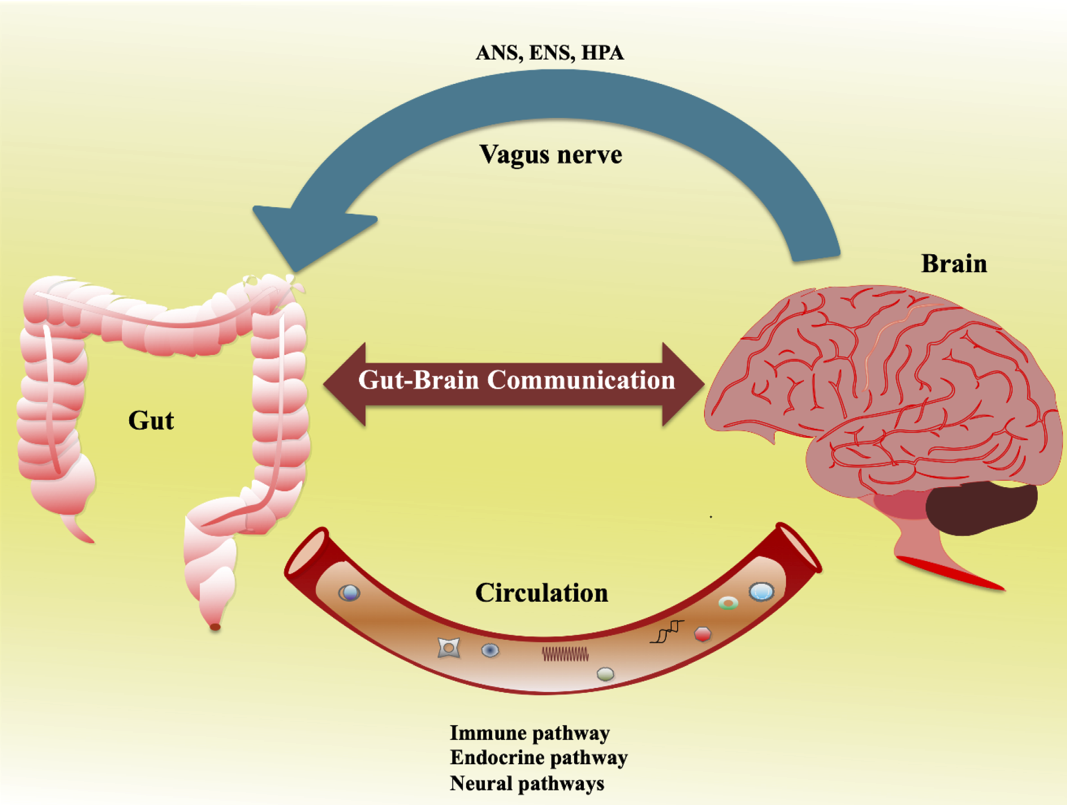Good day! Many of us have encountered the issue of excess weight in both children and adults with autism. Today, we will review an article that is not directly related to autism but allows us to learn more about the microbiota, obesity, and the brain.
The review article "Obesity and gut-microbiota-brain axis: A narrative review" was prepared by researchers from five universities in Iran and was published by Wiley in March 2022.
Obesity is a major health issue associated with various physiological and mental disorders, such as diabetes, stroke, and depression. The gut microbiota has a confirmed link with different organs, including the brain. The gut-brain axis, a bidirectional connection between gut microbiota and the brain, influences physiological functions and behavior through three main pathways:
- Neuronal pathway – This consists of the enteric nervous system (a part of the autonomic nervous system that regulates gastrointestinal function) and the vagus nerve.
- Endocrine pathway – This affects the brain’s neuroendocrine system, particularly the hypothalamic-pituitary-adrenal axis.
- Immunological pathway – This plays a role in immune system interactions.
The article presents concerning statistics: according to the WHO, in 2016, about 1.9 billion people were overweight, and 650 million were classified as obese.
What is obesity? It is a medical condition in which body weight exceeds the desirable and acceptable range, often due to excess fat accumulation. The authors highlight the major diseases correlated with obesity and discuss intervention strategies based on the gut-brain connection.
The Gut-Microbiota-Brain Axis
The review explores the gut-microbiota-brain axis, emphasizing key factors that influence microbiota, such as diet, diseases, environment, and age. Gut microbiota plays a crucial role in infant immunity and interacts with environmental signals, modulating them accordingly.
The gut-brain axis is a bidirectional system that helps maintain homeostasis between the central nervous system (CNS) and the gastrointestinal tract. The nervous system physically connects the brain and gut through nerve fibers. The vagus nerve and autonomic nervous system are the primary neuronal pathways. The vagus nerve transmits outgoing signals from the CNS to internal organs and tissues.
Animal studies show that the vagus nerve facilitates communication between the gut and brain. Research has demonstrated that Lactobacillus rhamnosus affects the expression of gamma-aminobutyric acid (GABA) receptors in brain regions linked to emotions and behavior, helping to modulate anxiety. Additionally, L. reuteri has been shown to positively impact social behavior in autism models.
The Endocrine Connection
The gut-brain connection through the endocrine system involves modulation of the brain’s neuroendocrine functions and the production of microbiome-derived hormones and metabolites that circulate in the body and reach other organs. The gut microbiome produces several neurotransmitters, such as catecholamines, GABA, and tryptophan, which can influence the hypothalamus and, in turn, affect neuroendocrine function. Many of these neurotransmitters are potentially linked to psychiatric and neurological disorders, including anxiety, depression, autism, and neurodegenerative diseases.
Gut-Brain-Based Obesity Treatments
How can obesity related to the gut-brain axis be treated?
- Probiotics and prebiotics (especially inulin-type prebiotics)
- Synbiotics (a combination of prebiotics and probiotics)
- Potential therapy using Akkermansia muciniphila (a bacterium associated with metabolic disorders)
- Fecal microbiota transplantation
For more detailed information on treatment methods and the interaction of these systems, you can read the full article.
